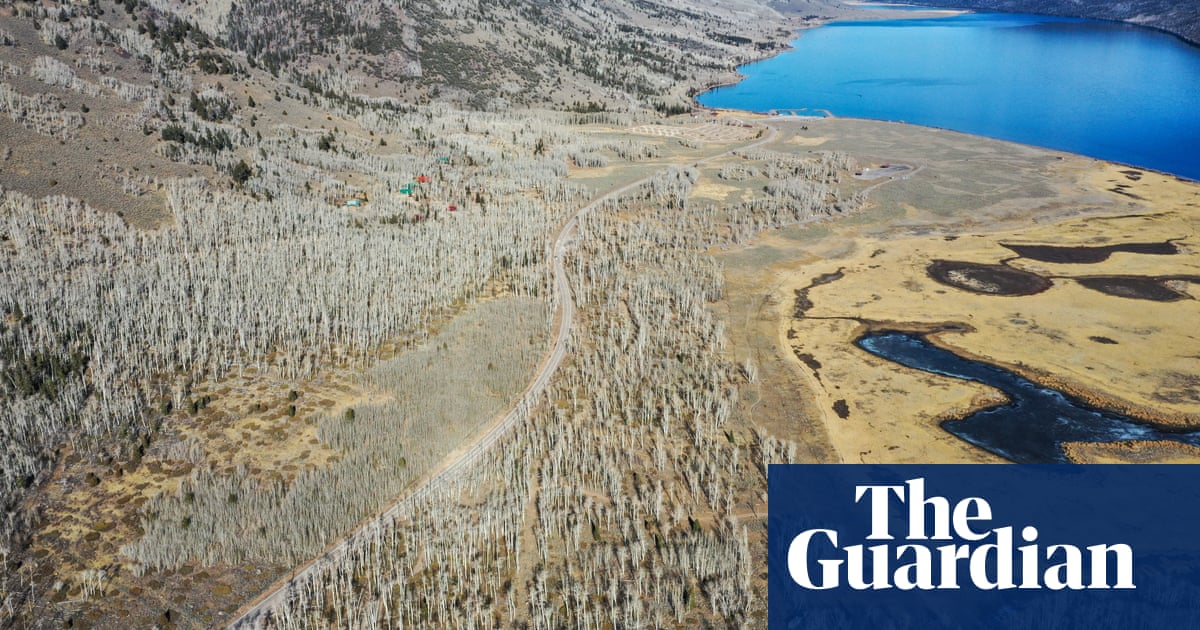
When it comes to the world’s heaviest living organism, it is a “forest of one tree” that is thought to take the crown. Now a sound expert is listening into the quiet grove in an attempt to hear its secrets.
Known as Pando – Latin for “I spread” – the 47,000 genetically identical quivering aspens in south-central Utah are considered to be a single organism, with the “trees” actually branches thought to be connected by a shared root system.
The upshot is a vast living entity, thought to be thousands of years old, that covers 43 hectares (106 acres) with a dry weight of about 6m kg, making it, putatively, the Earth’s heaviest living organism. But it is also an organism in danger, with experts warning Pando is probably dying off due to human actions.
Now an acoustic artist has revealed how he has delved deep to uncover fresh insights into the tree.
“This project began with a question: what is the sound of one of the world’s largest organisms,” said Jeff Rice, a sound artist, in the presentation at the 184th meeting of the Acoustical Society of America in Chicago.
The endeavour was initially an art project, with Rice working in collaboration with Lance Oditt, the founder of the nonprofit group Friends of Pando.
“I recorded pretty much everything that I could possibly record,” Rice said in an interview with the Guardian, adding that this included the leaves, birds, foxes, and even the sound of ants moving over the branches.
Looking for new ways of listening to the tree, Rice – who is artist-in-residence for Friends of Pando – placed a hydrophone inside a hole at the base of one of the branches, and lowered it down to touch the roots.
“It was just an experiment, and I honestly didn’t think I would get anything,” he said.
When he put on his headphones, he was in for a surprise.
In one recording, made during a thunderstorm , an eerie, deep rumbling can be heard.
“What you’re hearing I think, is the sound of millions of leaves in the forest, vibrating the tree and passing down through the branches, down into the earth,” Rice said in his presentation.
Fascinated by the approach, the pair carried out an impromptu experiment: Oditt pounded on one branch of Pando while Rice monitored the sound at the roots of another branch, about 100ft away.
“What we were doing was not science. This was just sort of exploration,” Rice said.
While Oditt’s pounding was not audible through the air, a thump was detected through the hydrophone. “That suggests that there’s a connection between these different branches in terms of the sound,” said Rice. “What we’re hearing is not just this one branch that we’re listening to but many branches around us.”
However, the results do not necessarily provide evidence of a connected root system, not least as the sound could be travelling through the soil.
Prof Paul Rogers, an expert on Pando at Utah State University and who was not involved in the work, said it was not known for certain that the branches of Pando were connected by the root system, and welcomed Rice’s acoustic work.
“However, it should be treated as an experiment at this time which needs to be demonstrated via strong scientific support,” he said.
For Rice, however, it seems his initial question has been answered.
“I think the sound of Pando is really the sound of all of the parts of it,” he said. “It’s the birds that are living in the tree, and it’s the insects, and it’s the wind in the leaves and it’s the vibration of the earth and the potential sound of the roots. And so I see it as really a great way of understanding the interconnectivity of Pando, and also soundscapes in general.”
"sound" - Google News
May 11, 2023 at 04:09AM
https://ift.tt/5RTHmSB
Sound artist eavesdrops on what is thought to be world’s heaviest organism - The Guardian
"sound" - Google News
https://ift.tt/HEhly1f
Shoes Man Tutorial
Pos News Update
Meme Update
Korean Entertainment News
Japan News Update

No comments:
Post a Comment